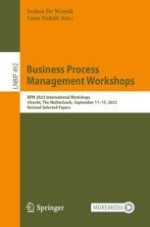This book constitutes revised papers from the International Workshops held at the 21st International Conference on Business Process Management, BPM 2023, in Utrecht, The Netherlands, during September 2023.
Papers from the following workshops are included:• 7th International Workshop on Artificial Intelligence for Business Process Management (AI4BPM 2023)• 7th International Workshop on Business Processes Meet Internet-of-Things (BP-Meet-IoT 2023)• 19th International Workshop on Business Process Intelligence (BPI 2023)• 16th International Workshop on Social and Human Aspects of Business Process Management (BPMS2 2023)• 2nd International Workshop on Data-Driven Business Process Optimization (BPO 2023)• 11th International Workshop on Declarative, Decision and Hybrid Approaches to Processes (DEC2H 2023)• 1st International Workshop on Digital Twins for Business Processes (DT4BP 2023)• 1st International Workshop on Formal Methods for Business Process Management (FM-BPM 2023) • 2nd International Workshop on Natural Language Processing for Business Process Management (NLP4BPM 2023)• 1st International Workshop on Object-Centric Processes from A to Z (OBJECTS 2023)• 3rd International Workshop on Change, Drift, and Dynamics of Organizational Processes (ProDy 2023)
Each of the workshops focused on particular aspects of business process management. Overall, after a thorough review process, 42 full papers were selected from a total of 86 submissions.
